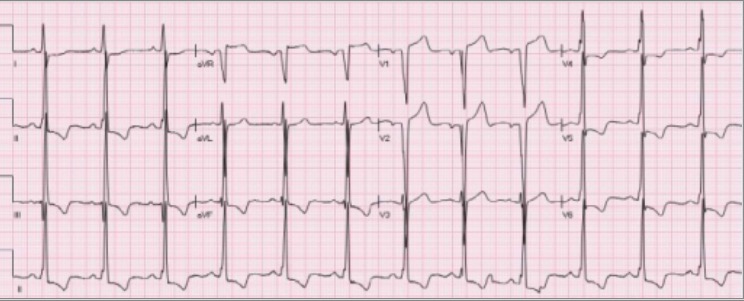Playlist
Show Playlist
Hide Playlist
Renal Parenchymal Hypertension – Secondary Hypertension
-
Slides Secondary Hypertension.pdf
-
Download Lecture Overview
00:01 Let's talk a little bit about renal parenchymal hypertension. 00:03 This is a common feature in acute, typically glomerular or vascular disorders, and chronic kidney disease. 00:11 So, for example in acute glomerular disease, the pathogenesis is related to volume overload. 00:16 Suppression of the RAAS system. 00:18 There's actually a mechanism in the principle cell where it turns on that sodium-potassium ATPase and patients tend to reabsorb more sodium. 00:26 In acute vascular disease, it's a little bit different. 00:29 Hypertension here results from ischemic-induced activation of RAAS, much like it does in renovascular disease that we just talked about. 00:36 So, when we think about renal parenchymal hypertension due to chronic kidney disease, the pathogenesis is really multifactorial. Remember, our patients are volume expanded. 00:47 They have sodium and water retention. 00:49 They have activation of sympathetic tone or sympathetic nervous system. 00:53 Their renin-angio-aldo system is activated. 00:56 They also will have contribution from secondary hyperparathyroidism. 01:00 That means intracellular calcium is mediating vasoconstriction in those patients. 01:04 And they have endothelial dysfunction. 01:06 The treatment for CKD patients who have renal parenchymal hypertension include having an ACE inhibitor or angiotensin receptor blocker. 01:14 Those have been shown to slow decline in GFR in patients who have proteinuria. 01:20 A diuretic for volume removal and a calcium channel blocker as a third-line agent if needed. 01:26 ACE inhibitors and ARB may cause an initial fall in GFR and I want you to think about why that would happen. 01:35 Remember where ACE inhibitors and ARBs work. 01:37 They're, again, at that efferent arteriole and if they're causing vasodilation or keeping it from being constricted, remember what happens. 01:45 That's going to drop the hydrostatic pressure in the glomerulus and therefore, decrease GFR potentially. 01:51 But we typically tolerate an increase in serum creatinine. 01:55 If it's less than 30-35%, we tolerate that and we don't want to discontinue therapy because it's vital in that patient population.
About the Lecture
The lecture Renal Parenchymal Hypertension – Secondary Hypertension by Amy Sussman, MD is from the course Secondary Hypertension.
Included Quiz Questions
Which of the following is true regarding renal parenchymal hypertension?
- Activation of the renin-angiotensin-aldosterone and sympathetic nervous systems contribute to renal parenchymal hypertension due to CKD.
- In acute glomerular injury, there is volume overload and inappropriate activation of the RAAS system.
- ACE inhibitors/ARBs may cause an initial increase in GFR.
- Calcium-channel blockers slow the decline of GFR in patients with proteinuria.
Customer reviews
5,0 of 5 stars
| 5 Stars |
|
5 |
| 4 Stars |
|
0 |
| 3 Stars |
|
0 |
| 2 Stars |
|
0 |
| 1 Star |
|
0 |






